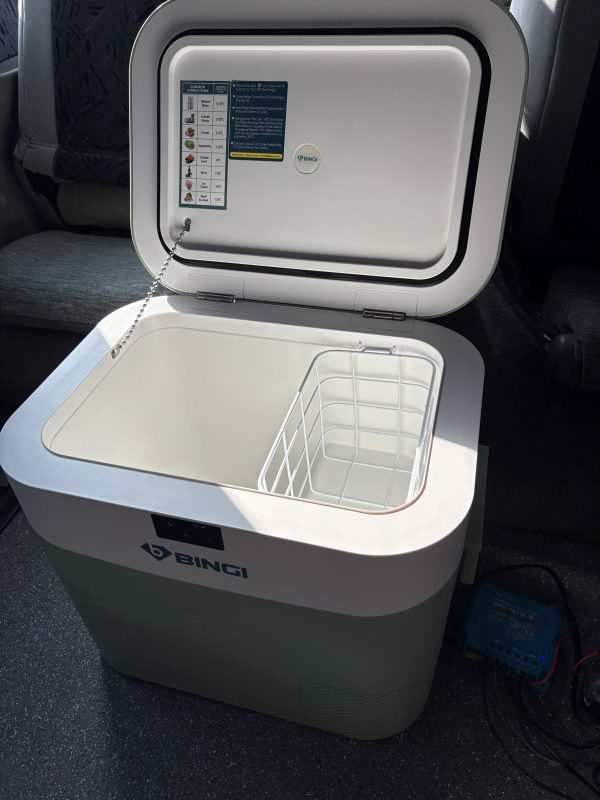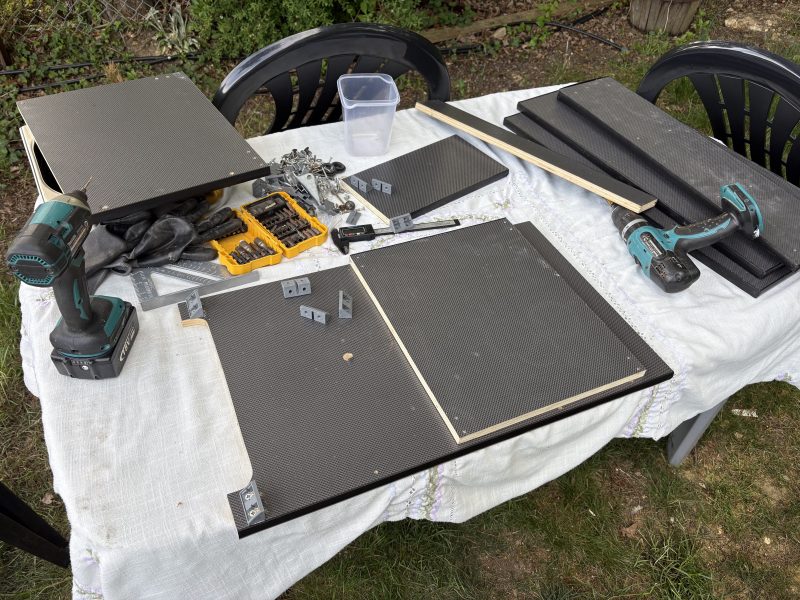
3 May 2025
As I mentioned in Kitchen Conversion – Part 1, I realised how valuable the lightweight caravan-grade plywood panels from the original kitchen were. They’re not sold in small sizes — a standard sheet is 2440 x 1220 mm, and shipping can add another £100 or so due to the size. So I decided to reuse every possible piece from the old kitchen.
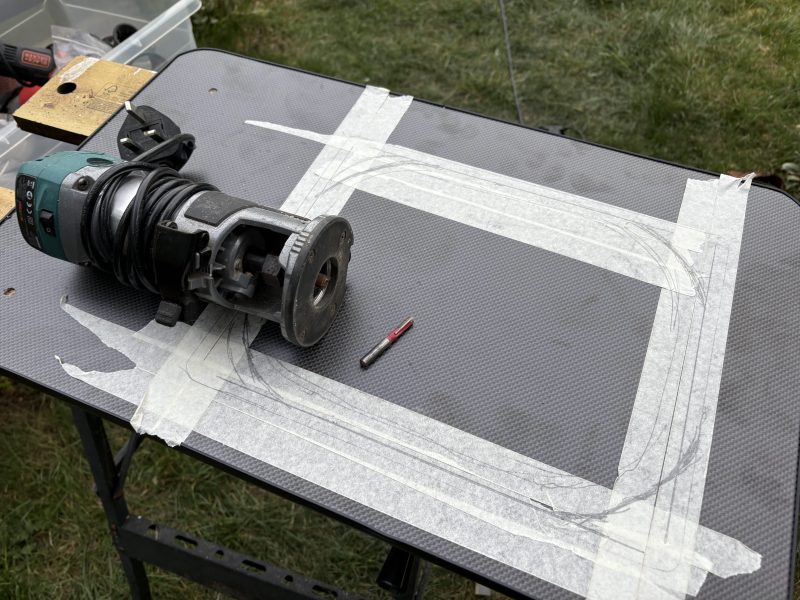
The cabinet door from the previous kitchen is now repurposed as the new kitchen top. I used a router to cut the sink opening.

I quickly built a cabinet — 32 cm wide, 40 cm deep, with two shelves — in about 30 minutes. I reused brackets and screws salvaged from the old kitchen.
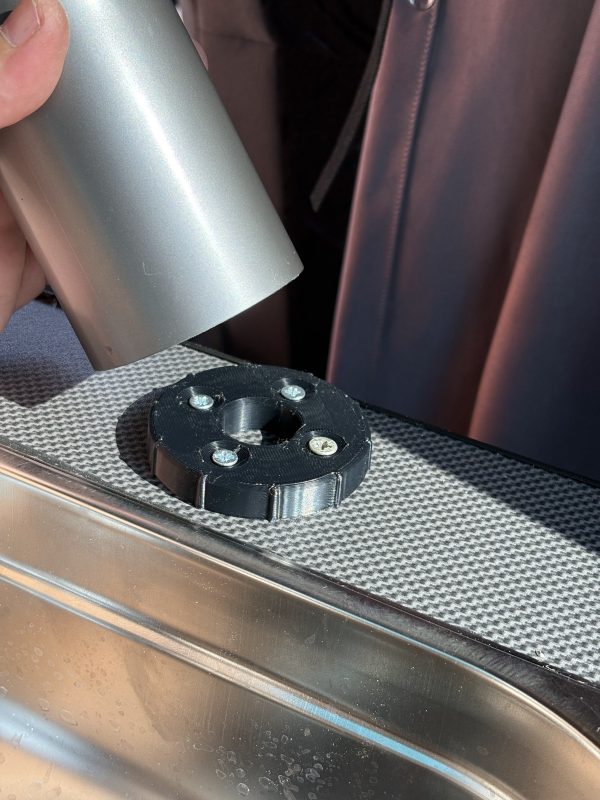
This 3D-printed piece I designed holds the tap in place. It also allows me to remove the electric tap easily when it needs recharging.

Here’s the interior: there’s space under the sink for the stove, and at the bottom, two 10-litre water tanks for fresh and grey water.

I decided to add a fold-out table made from a second panel. When folded, it sits in front of the cabinet and acts as a door, covering the shelves. I designed this 3D-printed bracket to attach the folding table hinges to the cabinet frame.
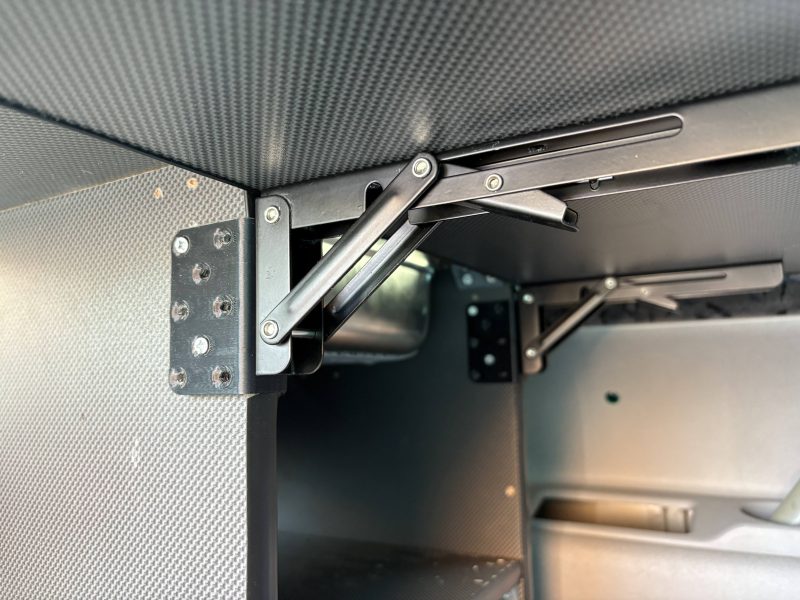
This is how the hinge bracket attaches to the cabinet.

And here’s the table when extended.

This is the rear of the cabinet. The water hoses will enter the tanks from here.
And that’s the final result! The cabinet is now fully functional and in use, just as you see in the video. I drilled two holes in the bottom shelf to attach it to the seat rails using T-bolts. That means it can be removed in 2–3 minutes for outdoor use or to create more cargo space inside the van.
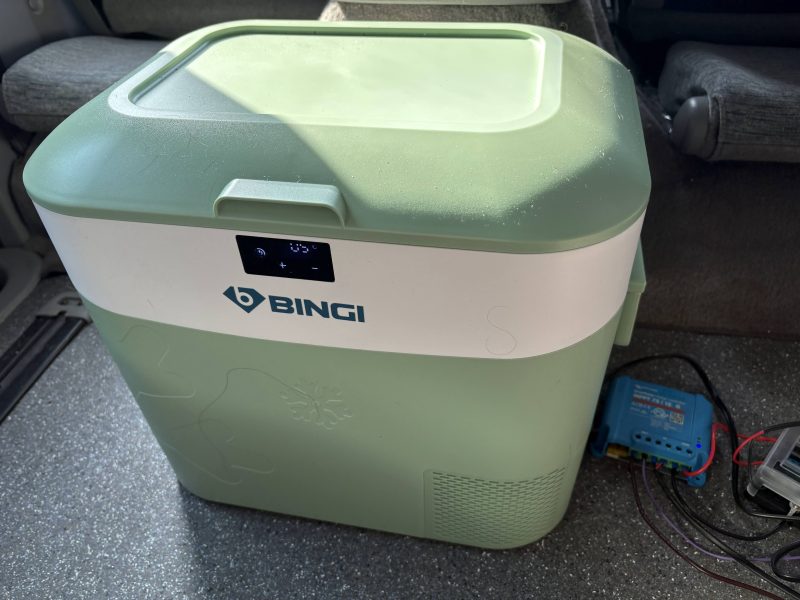
Lastly, here’s a quick word about our fridge.
BINGI 18L – I highly recommend this compact top-opening fridge for any campervan where space and energy efficiency matter. It’s affordable, uses space efficiently, and can even fit a wine bottle standing up 🙂
Its compressor is impressively efficient. On a hot summer day when the van interior reached 35°C, it consumed an average of 220Wh per day. In full use by four people, it peaked at 260Wh daily. With a pair of 135W solar panels in series, the Victron charger fully replenishes overnight consumption by around 8 AM the next morning, switching to float mode.
Here’s the link: https://amzn.eu/d/5hy23V5
Update – 2 August 2025:
Still working flawlessly, and we’re genuinely happy with it. Especially helpful after supermarket trips — you can keep food chilled, or even switch to -18°C deep-freeze mode when needed. Strongly recommended.
